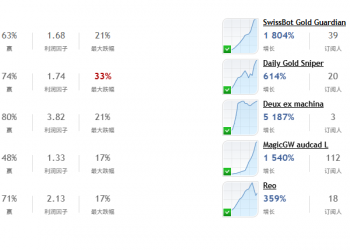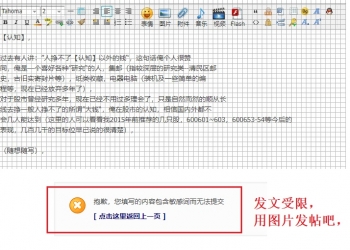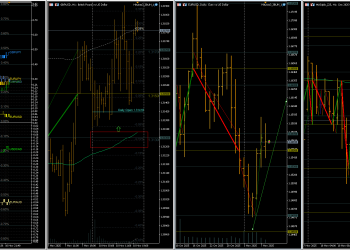US - Monster Employment Index
How does this affect the market?
Monster collects job postings from 1,500 web sites (including Monster.com) and creates an index of job availability, akin to The Conference Board's help wanted index. The difference between the two is that one collects help wanted advertising from newspapers and the other collects from online posting. The Monster index is not seasonally adjusted.
In addition to providing insight on the general strength of the economy, this report gives a sense of how many jobs employers are trying to fill. If that number is relatively high, it could mean there is a shortage of available workers and companies may have to offer higher wages to attract them. This leads to wage inflation, which is bad news for the stock and bond markets. Federal Reserve officials are always worried about the potential for inflationary pressures. When the employment index measuring job availability is falling, this bodes well for the bond market because it implies a drop in labor demand and perhaps an economic downturn. While the Fed worries about inflation, they also are concerned about rising unemployment. A rising jobless rate can mean a more accommodative monetary policy. The equity market prefers to see healthy economic growth and thus would rather see increases in the employment index. An increase in job demand means that consumers will have more money to spend on goods and services - and this ultimately affects profits.
GB - BOE Announcement
How does this affect the market?
The Bank of England Monetary Policy Committee consists of nine members. The Committee meets monthly, usually the first week in the month in order to determine the near-term direction of monetary policy. Changes in monetary policy are announced immediately after the meetings, but no details are available until the minutes are published two weeks later.
The Bank of England determines interest rate policy at their monetary policy meetings. The MPC is composed of the Governor, two Deputy Governors, two Bank Executive Directors, and four experts appointed by the Chancellor of the Exchequer. The MPC meets monthly (usually the first Wednesday and Thursday of the month) to determine interest rate policy. Unlike the Federal Reserve, Bank of Japan, or the European Central Bank, the Bank of England has an established fixed inflation target of 2.5 percent. Because interest rate decisions affect market interest rates, to varying degrees, the Bank's measure of inflation is the retail price index less mortgage interest payments (RPIX). As in the United States, market participants speculate about the possibility of an interest rate change at these meetings. If the outcome is different from expectations, the impact on British markets -- and to some extent in Europe -- can be dramatic and far-reaching. The interest rate set by the Bank of England, serves as a benchmark for all other rates. A change in the rate translates directly through to all other interest rates from gilts (fixed interest government securities named after the paper on which they were once printed) to mortgage loans. The level of interest rates affects the economy. Higher interest rates tend to slow economic activity; lower interest rates stimulate economic activity. Either way, interest rates influence the sales environment. In the consumer sector, few homes or cars will be purchased when interest rates rise.
Furthermore, interest rate costs are a significant factor for many businesses, particularly for companies with high debt loads or who have to finance high inventory levels. This interest cost has a direct impact on corporate profits. The bottom line is that higher interest rates are bearish for the stock market, while lower interest rates are bullish.
EU - ECB Announcement
How does this affect the market?
The European Central Bank Governing Council consists of 16 members. The Committee meets twice a month. The first monthly meeting of the month is devoted to monetary policy. Changes in monetary policy are announced immediately after the meetings. A press conference is held about 45 minutes after the meeting ends. A statement is read concerning their action -- or lack of it -- followed by a question and answer period. Unlike other major central banks, the ECB does not publish meeting minutes or make voting records on monetary policy issues public.
The European Central Bank determines interest rate policy at their Governing Council meetings. The Council is composed of the six members of the Executive Council and 12 presidents of member central banks (Bank of France, Bundesbank, etc). The Governing Council meets twice monthly (usually the first and third Thursdays of the month). Monetary policy issues are generally discussed only at the first meeting of the month. The European Central Bank has an established inflation ceiling of 2 percent. The ECB's measure of inflation is the harmonized index of consumer prices (HICP). As in the United States, European market participants speculate about the possibility of an interest rate change at these meetings. If the outcome is different from expectations, the impact on European markets can be dramatic and far-reaching. The interest rates set by the ECB serves as a benchmark for all other rates in the eurozone. The level of interest rates affects the economy. Higher interest rates tend to slow economic activity; lower interest rates stimulate economic activity. Either way, interest rates influence the sales environment. In the consumer sector, few homes or cars will be purchased when interest rates rise. Furthermore, interest rate costs are a significant factor for many businesses, particularly for companies with high debt loads or who have to finance high inventory levels. This interest cost has a direct impact on corporate profits. The bottom line is that higher interest rates are bearish for the stock market, while lower interest rates are bullish.
US - Jobless Claims
How does this affect the market?
New unemployment claims are compiled weekly to show the number of individuals who filed for unemployment insurance for the first time. An increasing (decreasing) trend suggests a deteriorating (improving) labor market. The four-week moving average of new claims smoothes out weekly volatility.
Jobless claims are an easy way to gauge the strength of the job market. The fewer people filing for unemployment benefits, the more have jobs, and that tells investors a great deal about the economy. Nearly every job comes with an income that gives a household spending power. Spending greases the wheels of the economy and keeps it growing, so a stronger job market generates a healthier economy. There's a downside to it, though. Unemployment claims, and therefore the number of job seekers, can fall to such a low level that businesses have a tough time finding new workers. They might have to pay overtime wages to current staff, use higher wages to lure people from other jobs, and in general spend more on labor costs because of a shortage of workers. This leads to wage inflation, which is bad news for the stock and bond markets. Federal Reserve officials are always on the look out for inflationary pressures. By tracking the number of jobless claims, investors can gain a sense of how tight, or how loose, the job market is. If wage inflation threatens, it's a good bet that interest rates will rise, bond and stock prices will fall, and the only investors in a good mood will be the ones who tracked jobless claims and adjusted their portfolios to anticipate these events. Just remember, the lower the number of unemployment claims, the stronger the job market, and vice versa.
US - EIA Petroleum Status Report
How does this affect the market?
The Energy Information Administration (EIA) provides weekly information on petroleum inventories in the U.S., whether produced here or abroad. The level of inventories helps determine prices for petroleum products.
GB - CIPS Services PMI
How does this affect the market?
Published by the Chartered Institute of Purchasing & Supply (CIPS), the service industry survey is a composite indicator designed to provide an overall view of conditions in Petroleum product prices are determined by supply and demand - just like any other good and service. During periods of strong economic growth, one would expect demand to be robust. If inventories are low, this will lead to increases in crude oil prices - or price increases for a wide variety of petroleum products such as gasoline or heating oil. If inventories are high and rising in a period ofV?q6dstrong demand, prices may not need to increase at all, or as much. During a period of sluggish economic activity, demand for crude oil may not be as strong. If inventories are rising, this may push down oil prices. Crude oil is an important commodity in the global market. Prices fluctuate depending on supply and demand conditions in the world. Since oil is such an important part of the economy, it can also help determine the direction of inflation. In the U.S. consumer prices have moderated whenever oil prices have fallen, but have accelerated when oil prices have risen.
US - Chain Store Sales
How does this affect the market?
Monthly sales volumes from individual department, chain, discount, and apparel stores are usually reported on the first Thursday of each month. Chain store sales correspond with roughly 10 percent of retail sales. Chain store sales are an indicator of retail sales and consumer spending trends.
Consumer spending accounts for more than two-thirds of the economy, so if you know what consumers are up to, you'll have a pretty good handle on where the economy is headed. Needless to say, that's a big advantage for investors. The pattern in consumer spending is often the foremost influence on stock and bond markets. For stocks, strong economic growth translates to healthy corporate profits and higher stock prices. For bonds, the focus is whether economic growth goes overboard and leads to inflation. Ideally, the economy walks that fine line between strong growth and excessive (inflationary) growth. This balance was achieved through much of the nineties. For this reason alone, investors in the stock and bond markets enjoyed huge gains during the bull market of the 1990s. Spending at major retail chains did slow down in tandem with the equity market in 2000 and 2001 and again in 2003. Chain store sales not only give you a sense of the big picture, but also the trends among individual retailers and different store categories. Perhaps the discount chains such as Target and Wal-Mart are doing well, but the high-end department stores such as Tiffany's are lagging. Maybe apparel specialty retailers are showing exceptional growth. These trends from the monthly chain store data can help you spot specific investment opportunities, without having to wait for the quarterly or annual reports. Just a few words of caution. Sales are reported as a change from the same month, a year ago. It is important to know how strong sales actually were a year ago to make sense of this year's sales. In addition, sales are usually reported for "comparable stores" in case of company mergers.
US - Treasury STRIPS
How does this affect the market?
A report on the amount of net stripping of Treasury securities that has taken place during the month. The report details gross stripping and reconstitution of Treasury notes and bonds by individual issue.
STRIPS is an acronym for Separate Trading of Registered Interest and Principal of Securities. A normal Treasury note or bond consists of a principal payment and semiannual interest payments. For example, a 30-year Treasury bond for $1,000 consists of 60 interest payments--one every six months for 30 years--and a principal payment of $1,000 when the bond matures. If this bond gets stripped of its interest (coupon) payments, it becomes a "zero-coupon" bond. The owner doesn't get paid any interest but buys the right to repayment of principal, $1,000, at a deep discount to the face value. Investors buy these to guarantee a certain payment amount at a specific point in the future (e.g. when a child will be ready for college), but don't want income from the bonds over that period. |
 MQL5全球十大量化排行榜510 人气#黄金外汇论坛
MQL5全球十大量化排行榜510 人气#黄金外汇论坛 【认知】5262 人气#黄金外汇论坛
【认知】5262 人气#黄金外汇论坛 关于论坛修改用户名称的图解737 人气#黄金外汇论坛
关于论坛修改用户名称的图解737 人气#黄金外汇论坛 看涨欧元和英镑846 人气#黄金外汇论坛
看涨欧元和英镑846 人气#黄金外汇论坛